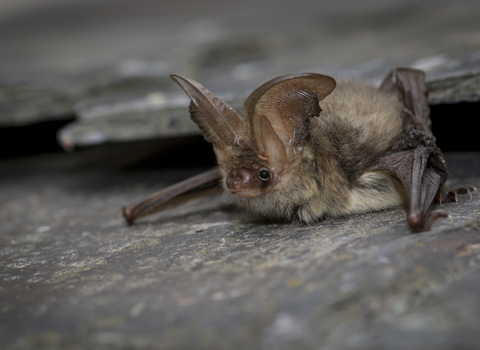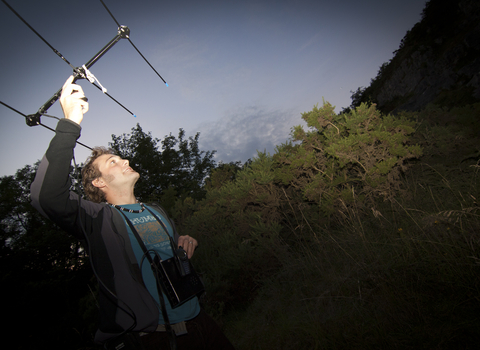SWT Ecology Services provides bat Surveys for private homeowners, developers and multi-disciplinaries, as well as public organisations and landowners in Surrey and across the South East.
About Bat surveys
The UK has 17 breeding bat species in the UK and 18 species which inhabit our shores.
Bats play an important role in our ecosystems, including controlling pest species and pollinating plants. In the summer, several species of bats will eat insects including mosquitoes and midges, with even the smallest species, Common Pipistrelle eating over 3000 critters in a single night.
Some bat species are quite common and can be seen feeding in our parks and green spaces, whilst others are very rare, including a single Greater Mouse-ear individual recorded in the UK.
Legislation
Bats are protected under the Conservation of Habitats and Species Regulations (2017) and receive further protection under the Wildlife and Countryside Act 1981, as amended. This makes it an offence to deliberately or recklessly damage or destroy any structure or place which bat(s) use for shelter or protection, disturb bat(s) while occupying a structure or place which it uses for shelter or protection or obstruct access to any structure or place which they use for shelter or protection.
Furthermore, seven bat species are Species of Principal Importance, covered under Section 41 of the NERC Act 2006. These include Barbastelle, Bechstein’s, Noctule, Soprano Pipistrelle, Brown Long-eared, Lesser Horseshoe, and Greater Horseshoe
Types of survey
Preliminary Roost Assessment (PRA)
This is usually in reference to a building or structure, and includes external and internal inspections. Externally, we will be looking for access points for bats to get in and out of the building, and any other evidence of bats using the building. Internally, we will be searching for bats, droppings, and other evidence of bats sheltering in the building.
Preliminary Ground Level Roost Assessment of Trees – This is an assessment of trees to search for features that bats may choose to shelter behind or any other signs of bats using the tree to shelter. If there are features that may not lead anywhere, but we cannot be sure from the ground, a further survey where someone climbs the tree to examine the feature more closely can be done.
Endoscope
A flexible camera is used to look underneath a feature to see if a bat is present.
Emergence/return to roost surveys
Surveyors watch the features identified during the PRA or Preliminary Ground Level Roost Assessment of Trees for bats leaving the roost at dusk, or returning to the roost at dawn. Specialist bat detectors are used to aid in identifying the species of bat using the roost.
Activity surveys
Surveyors walk throughout an area with a detector to understand where bat activity is focused. This type of survey can be useful to see what key habitats need to be retained for development to minimise impacts to this species.
Assessment of lighting design
Inappropriate lighting can have significant impacts on bat populations. Our expert bat specialists can review lighting plans and advise on how these can be designed to minimise impacts to bats.
Licences
We hold the necessary licences to undertake bat surveys, including Level 1 and Level 2 licences. We can prepare the necessary paperwork for your bat mitigation licence, liaise with Natural England and supervise any works under the licence.
SWT Ecology Services’ pragmatic advice has been much appreciated and their recommendations not onerous for us to fulfil. This has been invaluable for us to deliver our portfolio of projects!McCarthy & Stone


